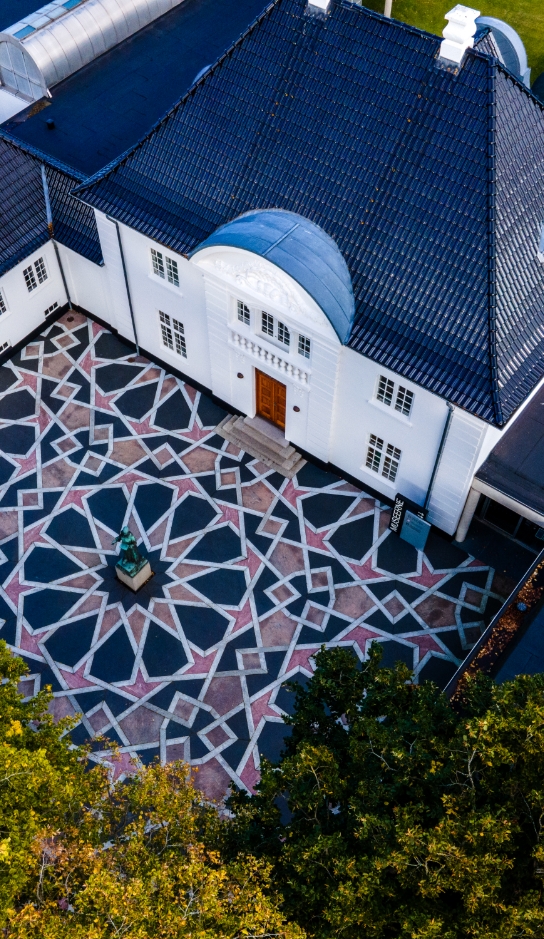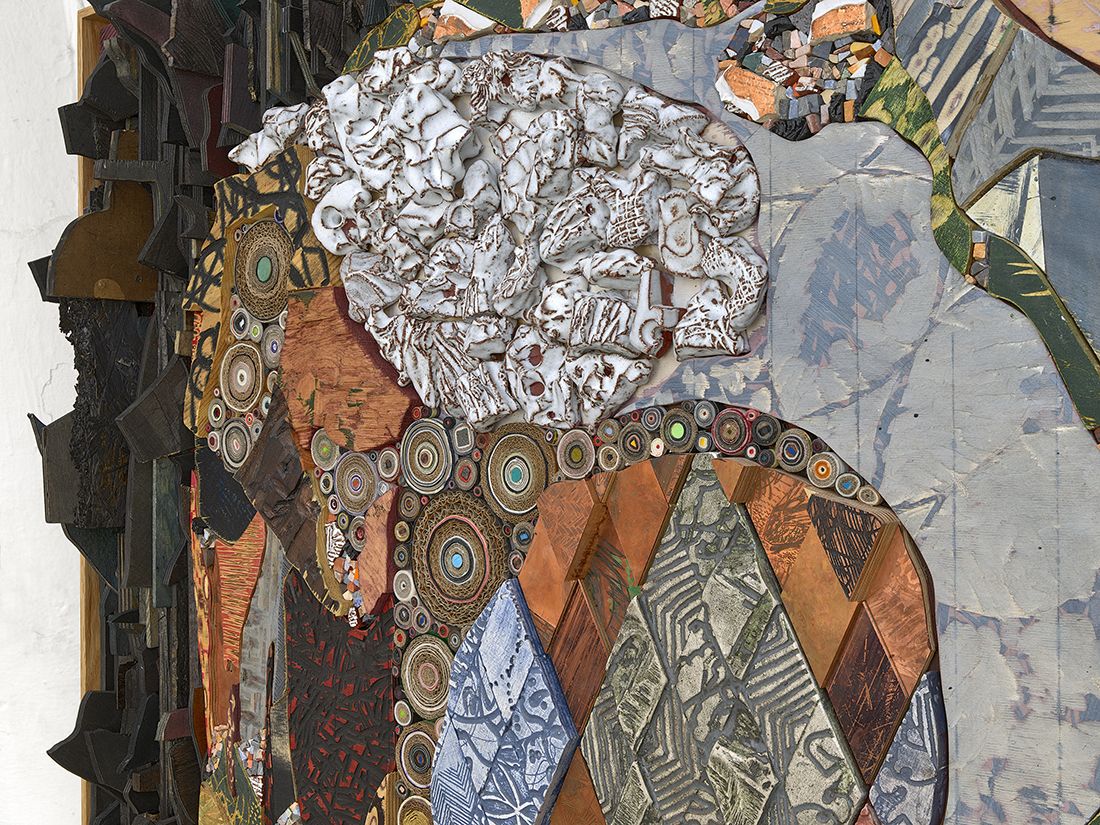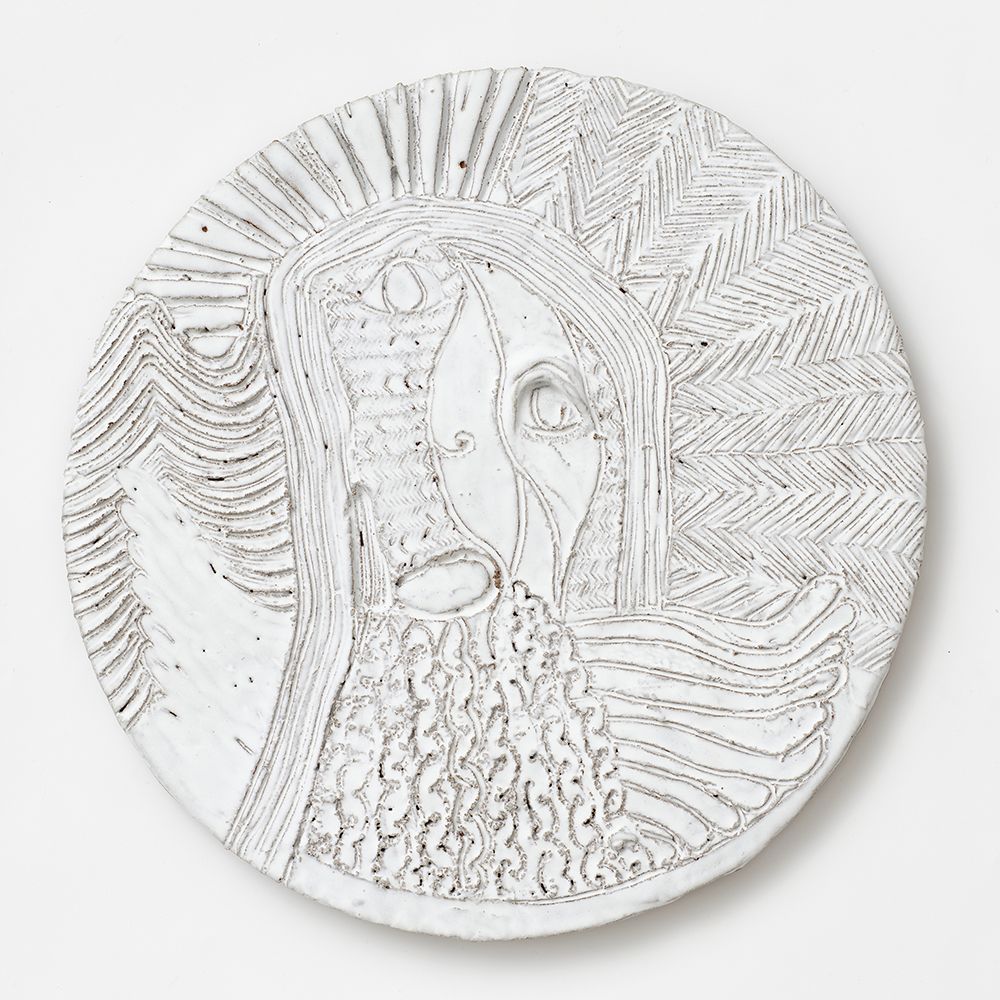Peter Linde Busk - Who Speaks of Victory? To Endure Is All
Special exhibition
The fundamental conditions of existence are among the main themes of the work of Peter Linde Busk (b. 1973). His pictorial universe is populated by tragicomic figures, depicted with deformities and unsightly distortions, in abyss-like spaces. Narratives of defeat and deep despair emerge from the works – but not infrequently the mood turns to biting satire, playfulness or rebellious humour.
The art historical references in the work of Peter Linde Busk are numerous, and he has a particular eye for modern 20th century masters such as James Ensor (1860-1949), Gustav Klimt (1862-1918), Georges Rouault (1871-1958) Paul Klee (1879-1940), Pablo Picasso (1881-1973) and Jean Dubuffet (1901-1985). His sources of inspiration also include late medieval icon paintings, Expressionism and the COBRA movement, as well as a number of slightly neglected traditions in art history, including folk art and the art of the mentally ill. The expression is grotesquely realistic and beauty-seeking at one and the same time.
From this, artworks arise that evince a quite unique combination of figuration and ornamentation, with detailed picture surfaces that are built up from meticulously planned compositions, repetitive pattern drawings and random trace formations from the artistic working process.
The titles and motifs of the works often make reference to the fictional universes of popular culture, with their reinterpretations of popular human destiny tales, such as they are played out in epoch-making US TV series such as Deadwood and The Wire, and not least world literature – especially Shakespeare, Baudelaire and Rilke, from whom Peter Linde Busk borrows the exhibition’s title Hvem taler om sejr? At overstå er alt (‘Who Speaks of Victory? To Endure Is All’). Rilke’s words about enduring the misery of the world are no less relevant in today’s existential struggle.
Background and exhibition
Holstebro Kunstmuseum was the first museum in Denmark to show a solo presentation by Peter Linde Busk (The Staging Area, 2013). The focus of the current special exhibition is the last ten years or so of his production, together with a large number of completely new works. The spotlight is thus on Peter Linde Busk’s mature practice and current artistic position.
In particular, the exhibition revolves around a very special, innovative genre of mosaics and reliefs, which Peter Linde Busk creates almost exclusively using leftover materials from earlier works, including canvas remnants, copperplate and fragments of ceramic. The work is in other words based on the dogma that everything should be reused – a recycling ideal that is simultaneously about sustainability, aesthetic limitation and a desire to allow the inherent potential of the materials at hand to play a part in the creative process.
Through extremely time-consuming work, these fragments are transformed into new figurations, resulting in works of great monumentality and artistic weight. The most recent production, enhancing the cultural diversity of the works, adds a Mediterranean and Greek tradition of intense light and richly colourful ornamentation, with references to glass mosaics from ancient Christian times, particularly the Byzantine Empire.
At the same time, the exhibition fully demonstrates how Peter Linde Busk’s artistic work is characterised with great consistency by recurrent themes and serial image formation. While the mosaics and reliefs mark a significant reorientation on the part of the artist, with greater complexity and a radical materiality of expression, the newer works, with their superimposed motifs and materials, are in continual dialogue with the older models.
Communication
The exhibition is accompanied by a comprehensive and richly illustrated monographic publication on Peter Linde Busk’s reliefs and mosaics from the years 2015-2022. The book includes a substantial essay by Dr Maria Fabricius Hansen, professor of art history at the University of Copenhagen, and a perspective contribution by cultural journalist, writer, radio host, musician, DJ and documentary filmmaker Minna Grooss, who in a series of associative work commentaries identifies the crucial importance of music in the work of Peter Linde Busk. Excerpts from Grooss’ prose are presented around the exhibition, along with musical recommendations.
The graphic design of the book is by Carl Zakrisson, and it has been published in a collaboration between Holstebro Kunstmuseums Forlag and Hatje Cantz Verlag, who distribute the book internationally.
Peter Linde Busk - a brief biography
Peter Linde Busk (b. 1973) lives and works in Faxe, Berlin and Athens. He trained at the Hunter College of Art (New York), the Slade School of Fine Art (London), Kunstakademie Düsseldorf and the Royal Academy of Arts (London).
He has exhibited widely in Denmark and abroad, with recent institutional showings at Kastrupgårdsamlingen, Richard Winthers Hus, Borås Konstmuseum and Kunstforeningen GL STRAND. In 2022 he installed the extensive outdoor work Solaris in the sculpture park of Wanås Konst in Sweden.
Peter Linde Busk has received the Ny Carlsberg Foundation Art Award (2020), and in 2021 he became a permanent member of the artists’ association Grønningen. In Denmark, he is represented in the collections of ARKEN Museum of Modern Art, KUNSTEN Museum of Modern Art Aalborg, and Holstebro Kunstmuseum.
The exhibiton is supported by the Obel Family Foundation and the Danish Arts Foundation.
In particular, the exhibition revolves around a very special, innovative genre of mosaics and reliefs, which Peter Linde Busk creates almost exclusively using leftover materials from earlier works, including canvas remnants, copperplate and fragments of ceramic. The work is in other words based on the dogma that everything should be reused – a recycling ideal that is simultaneously about sustainability, aesthetic limitation and a desire to allow the inherent potential of the materials at hand to play a part in the creative process.



